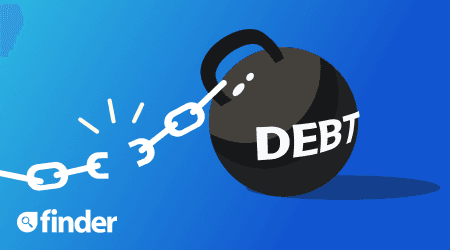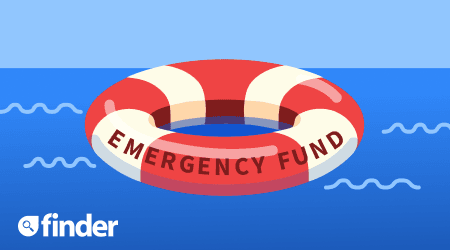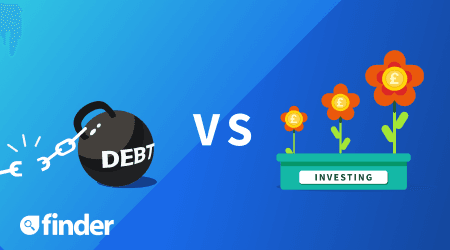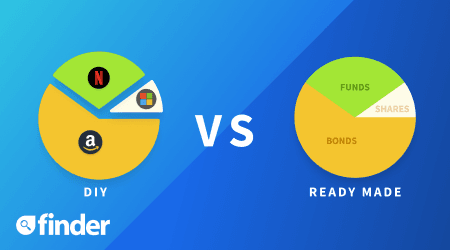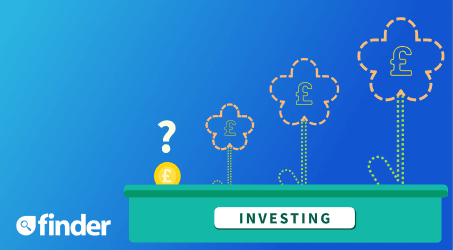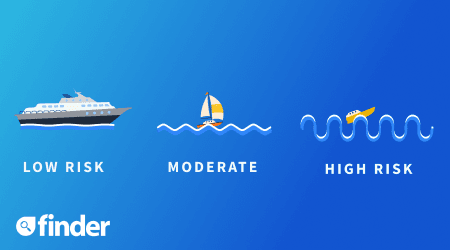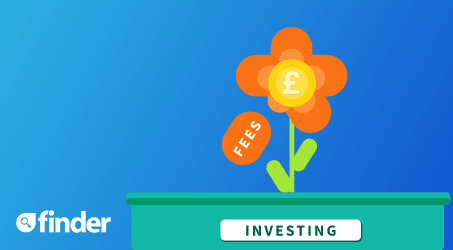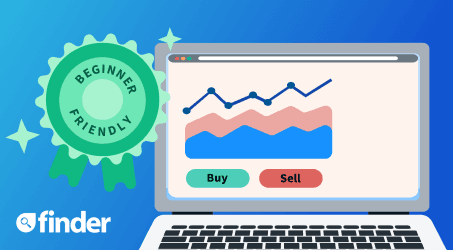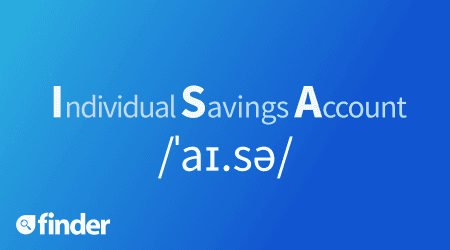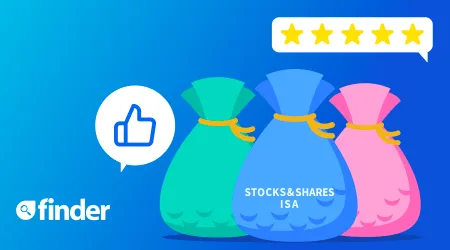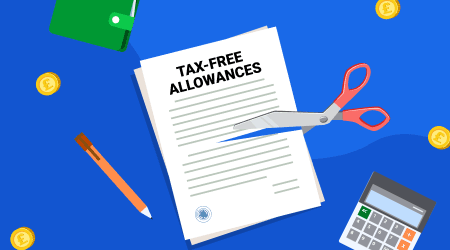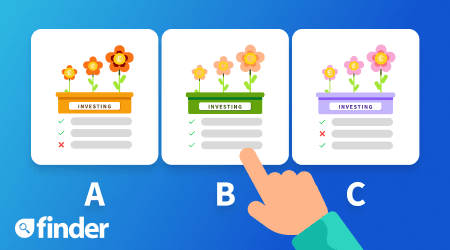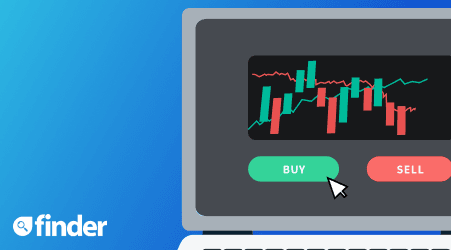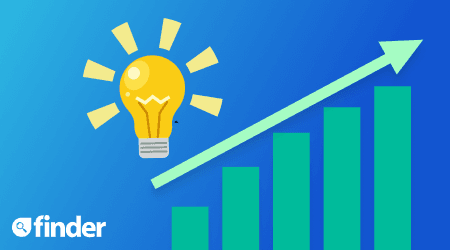 NOW PLAYING
NOW PLAYINGNvidia stock, UK inflation, IPOs and more | Stock market news July 2024
 2:07
2:07Welcome to Finder's beginners' investing hub
 1:27
1:27What is investing?
 1:41
1:41What are stocks and shares?
 1:19
1:19General investing principles
Meet Finder’s investment experts
Our team can help you navigate the world of investing. We start with the basics – like why people invest – explain the jargon and offer practical tips.
Zoe Stabler DipFA
Senior investment writer

Danny Butler
Investment publisher
Louise Bastock
Deputy editor

Alice Guy
Investment and tax writer

George Sweeney
Deputy editor
Liz Edwards
Editor-in-chief
AS SEEN ON:









What is investing?
Companies issue shares by listing them on a stock exchange, to raise money to plough into the company. When you invest in a company by buying shares in it, you’re buying a piece of the company. If the company does well, other investors will want those shares and pay you more for them. If the company does badly, they’ll pay less.
Usually, you buy the shares from a share trading platform – also called a “share dealing platform” or an “online broker” – and the money you pay goes to the investor who’s selling those shares, with a bit to the platform for the service.
The money you spend buying shares is called your “capital”. If your shares become worthless, you could lose all of this – which is why “Capital at risk” is a warning on investing ads.
You’ll quickly encounter terms like “FTSE 100” and “S&P 500”. The Financial Times Stock Exchange 100 Index is just the top 100 companies listed on the London Stock Exchange that have the highest value, based on the total value of their shares. Standard and Poor’s 500 is the top 500 companies listed on stock exchanges in the US.
Our graph, below, shows how the return from putting your money into a savings account has been peanuts in recent years compared with returns from investing (in general). And if you’d stuck it under the mattress, inflation would have eaten away at the value. All of this shows why people have been turning to investing to look for a better return. With that, though, comes greater risk, and no-one can guarantee what the next 10 years hold.
Before you start
Before you start investing, it’s worth making sure you’ve paid off debt that’s costing you more than 4% in interest and that you’ve got enough money for emergencies – at least 3 months’ worth of living expenses – squirrelled away in an account you won’t touch. This will be your “emergency fund”. Investing is for the long term – ideally more than 5 years – and you’re more likely to lose money in profits and fees if you withdraw money because you need it rather than because it’s a good time to sell.
Step 1: Narrow your options
To help find the best investment platform for you, and which type of investment you’re interested in, here are a few questions to ask yourself. You might want to jot down the answers or just think them through.
How long can I leave my money tied up for?
Investing should be for the long term – you ideally want your money tied up for more than 5 years. If you plan to make a large purchase within the next 5 years, you might be better suited to a traditional savings account. This means avoiding a situation where your shares drop in value but you need to use the money and are forced to sell.
How hands-on do I want to be?
If you’re investing because you want to get a better rate on your savings and don’t want the faff of creating and maintaining a portfolio – a collection of shares – then you probably want a “ready-made” version.
If the idea of investing excites you beyond the prospect of better interest rates, it’s likely that choosing your own investments would work for you.
How much risk can I handle?
Thanks to inflation, there’s a risk to your money from doing nothing. If you step into investing, there’s a huge spectrum of risk and higher risk can mean higher reward, or it can mean wipe-out. Happily there are some ways to narrow down your options.
If you’re generally nervous about risk, consider a ready-made portfolio. They’re put together and maintained by experts but can be slightly pricier. Typically, the aim is to spread out your risk so that if one set of shares drops in value, others within the collection make up for it. You could opt for this and buy a few shares by yourself to start with, if you want to try it out.
If you have a bit more appetite for risk, consider “funds” or “exchange traded funds” (ETFs). These are groups of investments, similar to ready-made portfolios but with the risk less spread out (“diversified”). You can choose them based on themes or countries.
If you’re feeling really confident about risk, you could dive straight into buying individual shares in companies, and create a portfolio yourself. You’ll want to choose a range of investments that spreads out – diversifies – the risk.
How much money am I investing?
Think in terms of a lump sum you might want to invest straight away and an amount to invest each month. A rough idea will do. This helps you work out how much each investment platform will cost you and whether one will work better for you than another.
A good rule of thumb is: never invest what you can’t afford to lose.
Do I already have an ISA?
You might have heard about stocks and shares ISAs (individual savings accounts) and you might already have a cash ISA, which is a type of savings account. One of the steps below is to open an ISA, but first, check that you’re not already paying into one.
ISAs allow you to make profits which the taxman can’t touch, as long as you keep to the rules and annual limits.
You’re only allowed to pay into one of each kind of ISA (stocks and shares vs cash) in each tax year, and you have a total ISA limit of £20,000 in the 2025/2026 tax year. This is the max you can pay into your ISAs before you have to pay tax. If you’ve already paid into a stocks and shares ISA in the current tax year, you’ll need to continue with that provider, transfer that ISA to a new provider, or open a general investment account with a new provider.
Step 2: Choose a platform
An investment platform, also called a broker or a trading app, lets you buy shares. There are lots of them, all with their own features, fees and quirks. There isn’t one “best” trading app for everyone – it’ll depend on factors such as which stock exchanges you want access to, how much you’re investing, and what learning resources you want.
Platforms with a ready-made portfolio
Looking back at the questions in step 1, if you said you wanted the lowest risk, you’ll likely be suited to a “robo-advisor” platform. Our experts have published a guide to robo-advisors to help you understand how they work.
If you want a ready-made portfolio plus additional investments that you choose yourself, look at trading apps that also offer ready-made portfolios.
If you’re up for higher levels of risk, you could choose a share trading app, and not bother with ready-made portfolios.
Platforms for high or low amounts
If you’re investing more than £15,000, consider choosing a platform that charges a flat fee rather than a percentage of your investments If you’re investing small amounts, do the opposite. This is to help you avoid any profits being eaten up by fees. If you’re investing small amounts, it’s also worth considering platforms that let you buy less than a whole share – this is called a fractional share.
Platforms with an ISA
ISAs are typically the same as a general investment account from the same provider but you don’t pay tax on the profits. Check for any additional fees on the ISA – this is not common but a few platforms offer an ISA as a premium feature. If you might want to move your ISA later, check the provider you’re choosing now will allow it.
If you’ve already paid into a stocks and shares ISA in this tax year but want to invest elsewhere, you can either find a platform with an ISA that takes transfers, or you could open a general investment account, in which case you don’t need to worry about finding a provider that lets you invest in an ISA.
Platform features
Look at the features of any app you’re considering – do you want fancy charts? Will the app let you deposit money the way you want to? Are you just interested in trading cheaply? There are zero commission and low cost apps. Advanced charting tools usually mean higher fees, so only get them if you’ll use them.
Protection for your money
Choose a platform that’s covered by the Financial Services Compensation Scheme (FSCS) and authorised by the Financial Conduct Authority (FCA). We show this in our platform reviews. Being in the FSCS means that if the platform goes bust, your money has some protection.
Step 3: Open an ISA
The best way to invest for the first time is in an ISA. This means that you’re not taxed on any profits you make on £20,000 worth of investments in each tax year. If you invest outside of an ISA, such as in a general investment account, you’ll have to pay capital gains tax on profits over £3,000. You could choose to invest in a personal pension or a lifetime ISA, both of which have different tax benefits and limitations.
Once you’ve chosen a provider to invest with, it’s time to open an account.
For this, be ready to submit:
- Personal details, such as your full name, address history for 3 years, date of birth and, potentially, details of income.
- Your national insurance number. You can find this on your payslip, and if you were born before 1996, your national insurance number card.
- A form of ID, such as your passport or driving licence.
Once you’ve collected up everything you need, here’s how to open an ISA — the steps many differ slightly depending on the platform you choose:
- Download the app or head to the provider website. If the provider is app-only, you often need to sign up in the app. If it has a desktop platform as well, you can often sign up on your desktop browser.
- Select “Sign up”. This will take you through some basic information, such as your name and address. You may need to take a photo of your ID, or take a short video.
- When asked which account type you would like, choose ISA. You’ll need to provide your national insurance number. Take a minute to read through what the provider says about ISAs. It’s your responsibility to ensure that you’re not overpaying into your ISA.
- Answer some questions about your understanding of investing and your risk profile (most providers ask this). Robo-advisors may use this to suggest a portfolio for you.
- Wait for verification. Sometimes you need to wait for someone to look over your information before you can start trading. This might take a day or two.
Step 4: Start investing
Once your investment provider has approved your account, you can start investing. Your first trade doesn’t have to be particularly exciting, and it certainly won’t make you a millionaire, but it’s worth simply buying a share so you understand exactly how it works.
Choose what you’d like your first investment to be — this could be anything, but it’s worth starting out with a company that you admire, perhaps because you like its products, or because you like something that it’s doing, such as helping the environment or paying a living wage to the employers.
- Search for what you want to invest in. If you know the “ticker code” (which is an identifying set of letters for that investment, such as AAPL for Apple shares), type it in the search box. A search of the company name is likely to find it, too.
- Tap “Buy”. You can usually choose to buy either based on value or per share. For example, you could choose to invest £50 in a company, so you’ll receive as many shares as £50 will get you (even if that’s only enough for part of a share, which would be called a “fractional share”), or you can buy a specific number of shares. If a provider doesn’t offer fractional shares, you’ll only get the second of these options. You may be offered a choice of order types, such as market order, limit order and triggered order. We’ve covered the different order types in “Jargon explained”, below.
- Review the information. On this page you’ll see details of your purchase, including any fees you might be charged, any relevant foreign exchange rate, and details about when your order will go through (if you’re trying to trade outside of stock market opening hours).
- Confirm. Your order has been made. It may not go through instantly, particularly if that stock is trending.
What’s next?
Once you’ve bought your first share, you’ve hit the ground running. Learn how to monitor share performance, about different investment types, building a portfolio and how to sell shares.
All investing should be regarded as longer term. The value of your investments can go up and down, and you may get back less than you invest. Past performance is no guarantee of future results. If you’re not sure which investments are right for you, please seek out a financial adviser. Capital at risk.
Read more on Share Trading
-
How to invest in your 20s and 30s
Here’s how to get started with investing as a 20- or 30-something, and why it’s often a really good idea.
-
How do stock exchanges work
Find out how stock exchanges work and how they protect investors as well as help companies raise finance.
-
What is a demo account for trading?
Demo trading accounts give investors the chance to test out different trading strategies in a risk-free environment. Here’s how they work.
-
Top 10 stock market myths
Find out the top 10 most popular stock market myths and whether or not there’s any truth to them.
-
How to sell shares
Find out how you can sell your shares in the UK.
-
How to choose your first investment
Read our quick guide that offers handy tips to help you choose your first investment.
-
Why do stock market prices fluctuate?
Find out what makes a stock price rise or fall, and when should you invest if a stock price keeps changing.
-
How to buy shares in a company
Are you looking to buy shares in a UK company? This beginner’s guide tells you what you need to do to buy shares easily.
-
Investment fees: What are they for and how much are they?
Thinking of investing? Check out our investment fee guide to find out what fees you will pay and how much they will cost you.
-
How to open a UK brokerage trading account
Looking to invest? Here’s how you can open a share trading account online in a few easy steps. Found out how to choose the best share dealing platform.
